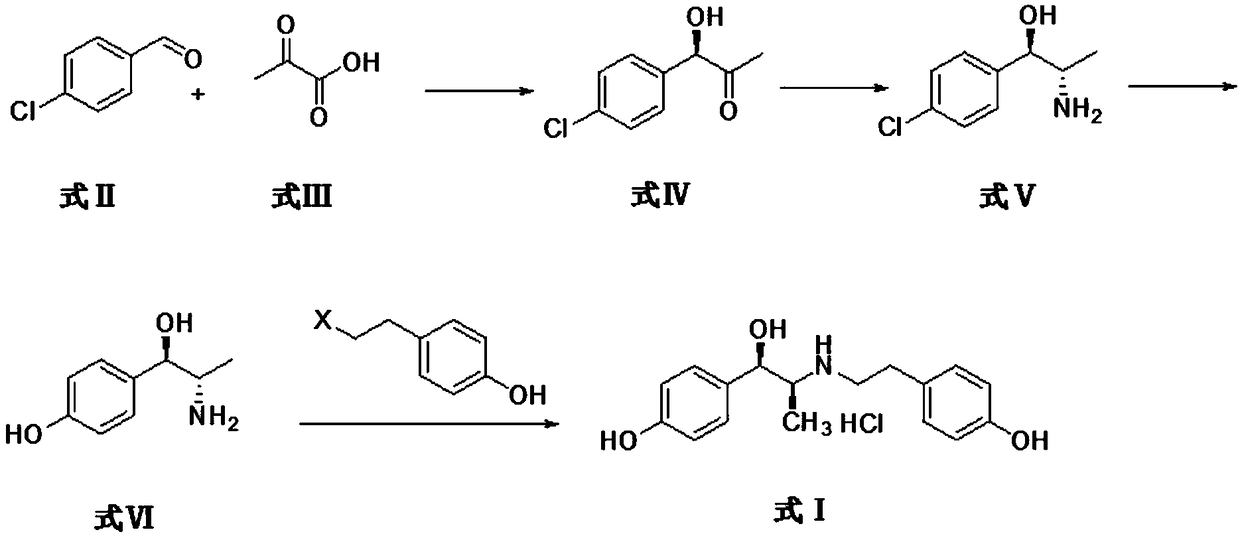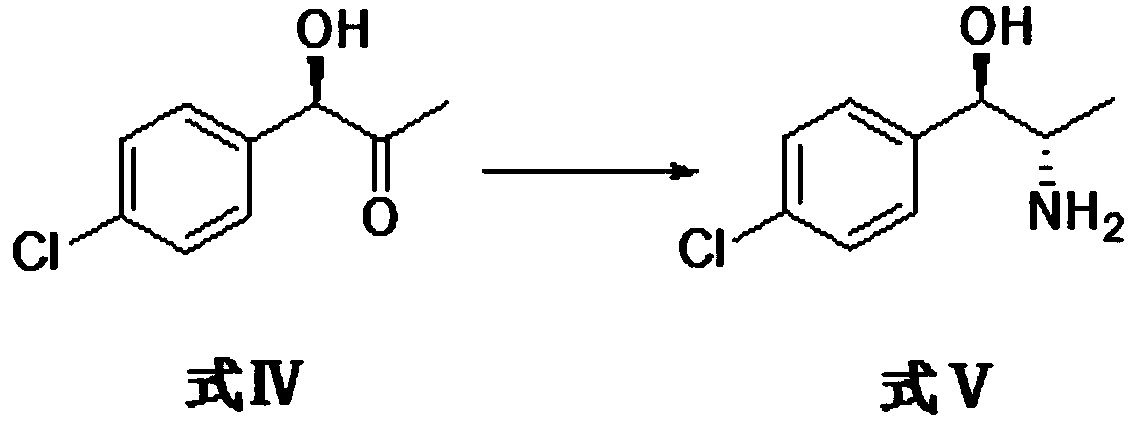The synthetic method of ritodrine hydrochloride
A technique for synthesizing ritodrine hydrochloride, which is applied in chemical instruments and methods, preparation of organic compounds, preparation of aminohydroxyl compounds, etc., can solve the problems of ritodrine achirality and complicated process, and reduce cost and process The effect of simple process and low reagent price
- Summary
- Abstract
- Description
- Claims
- Application Information
AI Technical Summary
Problems solved by technology
Method used
Image
Examples
Embodiment 1
[0032]The whole cell of genetically engineered bacteria derived from the propiophenone synthase of Zymomonas mobilis is prepared by selecting the gene sequence of the propiophenone synthase derived from Zymomonas mobilis and artificially designing the designed gene sequence as shown in SEQ ID NO in the sequence table : shown in the nucleotide sequence shown in 1; the sequence is synthesized through the whole gene, cloned into the Nde I and Xho I restriction sites of the expression vector pET28a, and transformed into host bacteria E.coli BL21 (DE3) competent cells; After the positive transformants were picked and identified by sequencing, the recombinant expression vector was obtained; the recombinant expression vector was transferred into the E. coli BL21 (DE3) strain, and the recombinant propiophenone synthase genetically engineered bacteria capable of inducing the expression of the recombinant propiophenone synthase was obtained. Inoculate the recombinant propiophenone syntha...
Embodiment 2
[0036] Use the compound p-chlorobenzaldehyde of formula II and the compound pyruvic acid of formula III as substrates and buffer solution to form a reaction system, add catalyst and additives, react and purify to obtain compound (R)-1-(4-chlorophenyl) of formula IV -1-Hydroxypropan-2-one.
[0037] The specific reaction process is as follows: the reaction is carried out in a 1L shake flask, and the reaction system is controlled to 300mL, with the formula II compound p-chlorobenzaldehyde (29.51g, 0.21mol) and the formula III compound pyruvic acid (24.64g, 0.28mol) as substrates , using citric acid-sodium citrate buffer solution as a solvent, using whole cells of genetically engineered bacteria derived from Zymomonas mobilis propiophenone synthase and coenzyme thiamine pyrophosphate as catalysts. The concentration of whole cells of the genetically engineered bacteria controlling the phenylacetone synthase derived from Zymomonas mobilis is 100 g / L, and the concentration of the coe...
Embodiment 3
[0041] Formula IV compound (R)-1-(4-chlorophenyl)-1-hydroxypropan-2-one and ammonium formate are used as substrates, and a buffer solution is used to form a reaction system, a catalyst is added, reacted, and purified to obtain formula V Compound (1R,2S)-2-amino-1-(4-chlorophenyl)-1-propanol.
[0042] The reaction was carried out in a 1L shake flask, and the reaction system was controlled to 300mL. Compound (R)-1-(4-chlorophenyl)-1-hydroxypropan-2-one (35.06g, 0.19mol) and ammonium formate (23.94g, 0.38mol) as a substrate, using phosphate buffered saline as a solvent, breaking the enzyme liquid with the genetically engineered bacteria derived from the leucine dehydrogenase of Saccharomyces cerevisiae, and the gene of formate dehydrogenase derived from Candida boidinii Engineering bacteria cell breaking enzyme liquid and coenzyme NAD+ are catalysts. Control the broken enzyme solution concentration of the genetically engineered bacteria derived from the leucine dehydrogenase of ...
PUM
 Login to View More
Login to View More Abstract
Description
Claims
Application Information
 Login to View More
Login to View More - R&D
- Intellectual Property
- Life Sciences
- Materials
- Tech Scout
- Unparalleled Data Quality
- Higher Quality Content
- 60% Fewer Hallucinations
Browse by: Latest US Patents, China's latest patents, Technical Efficacy Thesaurus, Application Domain, Technology Topic, Popular Technical Reports.
© 2025 PatSnap. All rights reserved.Legal|Privacy policy|Modern Slavery Act Transparency Statement|Sitemap|About US| Contact US: help@patsnap.com



